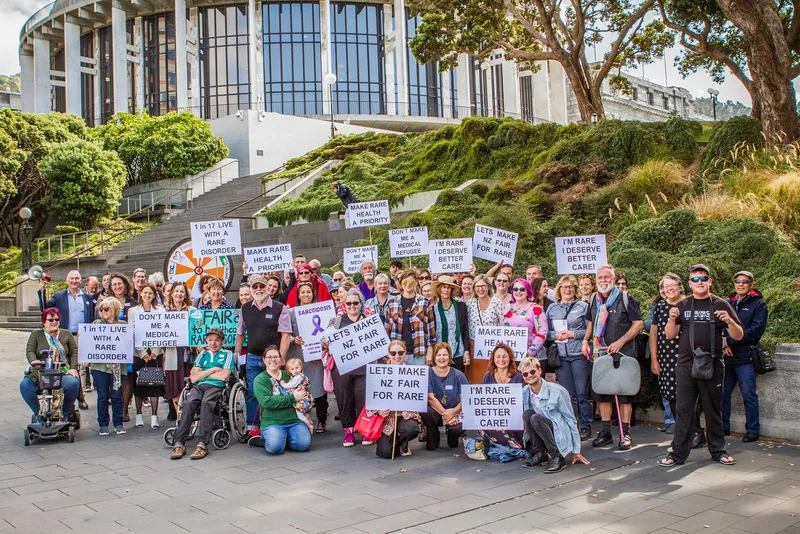Denise's story
1 Apr 2019
I was originally diagnosed with LGMD (limb girdle muscular dystrophy) around the age of 18 years. I think my parents had known for some time that there was something not quite right as I did myself, but the process for getting a diagnosis seemed to take quite some time as there was no family history. I remember being told I had a variety of different conditions including SMA (spinal muscular atrophy) but after many tests and a muscle biopsy this was changed to LGMD.
My condition continued to progress and I often felt it was hard to know or be able to chart when these changes came about. It felt like I was able to do something one day but not the next. Stairs became very difficult and we had to put a lift in at home as well as some other minor changes. Getting up out of chairs and out of bed was also difficult. My first daughter was born when I was 29 years old and the second when I was 33. At some point between those two events I got a powered wheelchair. With an active toddler and a new baby the wheelchair became essential as it allowed me to independently care for my children at home while my partner went to work.
Although I had seen other neurologists it wasn’t until someone new arrived at the hospital that there was some progress on getting a confirmed diagnosis. There are at least 30 different types of LGMD and they are a mixture of dominant and recessive conditions so it was important to have this confirmed for the sake of my daughters. Another muscle biopsy was organised and this was sent to Perth for further study. The results came back that I have calpainopathy or LGMD Type 2A which is a recessive condition and is the most common of the LGMD types. I had waited 21 years to get that confirmed diagnosis and was told I was the first person in New Zealand to be officially diagnosed with this.
As both of my parents are dead we were unable to do any testing on them but it looked likely that they were both carriers of this recessive gene. A simple blood test on an aunt and uncle revealed that one of them was also a carrier and suddenly the puzzle was complete. An amazing story as my father was from Hamilton and my mother was from Dublin, Ireland. The recessive inheritance pattern meant that they had a 1 in 4 chance of having an affected child and that was me.
As my condition is covered by the Ministry of Health and not ACC there is more limited access to services and funding. I would love to see this inequality changed as it seems to me that it should be based on need rather than cause. A progressive condition means that you are constantly adjusting to change. These days I am unable to dress myself, get in or out of bed and need help for the most basic day to day functions. I am now unable to walk, stand or transfer and even lifting my arms is becoming much more difficult.
However, I feel lucky that I am still able to work part time and have a fulfilling life with my family despite the ongoing progressive nature of the condition I have. I do believe that a positive outlook on life certainly helps. As my condition is very rare there is very little research being done into it, although I am hopeful that with the new treatments coming out for other types of muscular dystrophy there might one day be something for LGMD 2A.


